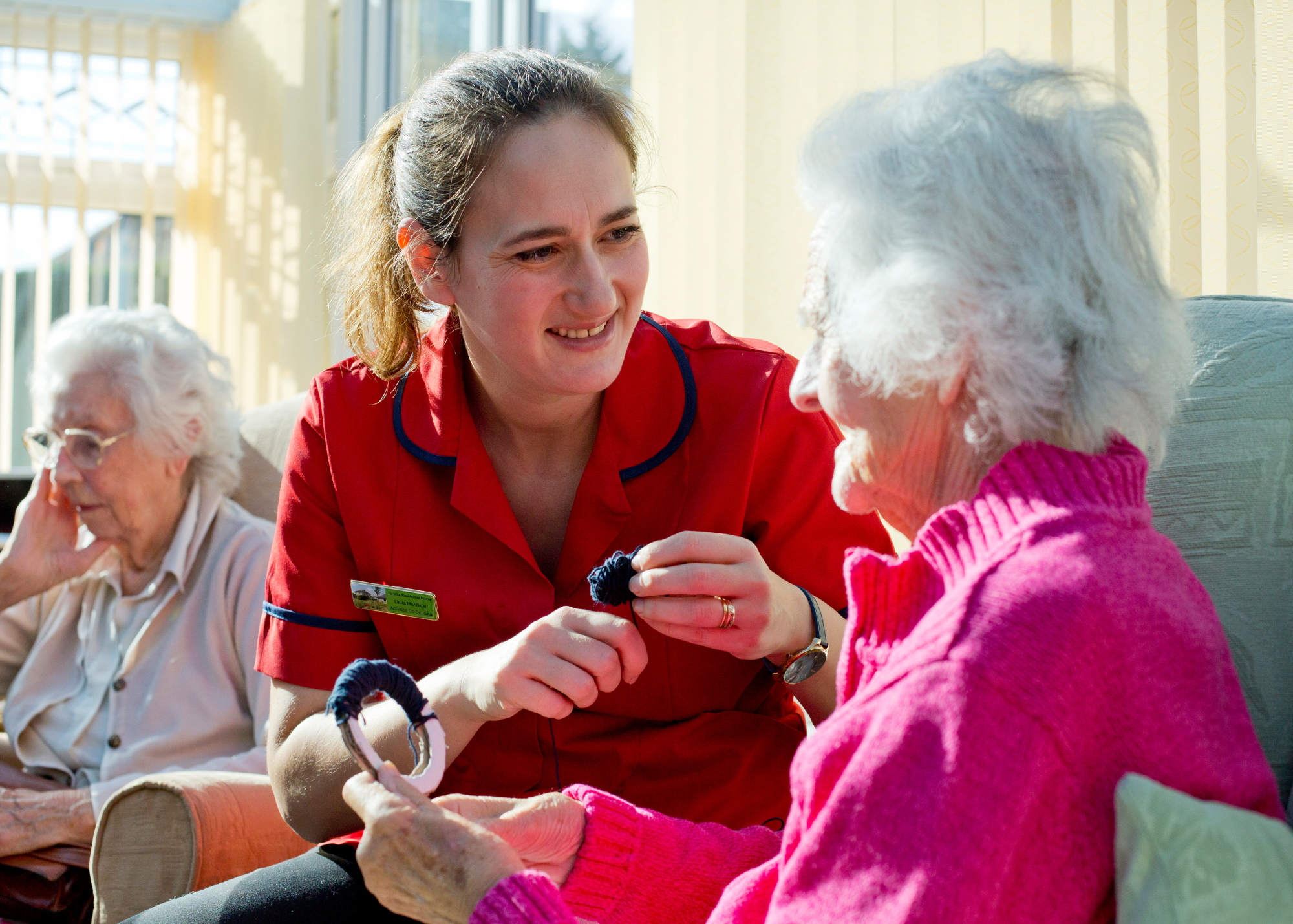It’s not always easy to encourage shy or quiet residents to get involved in activities, especially busy or group events. Find out how to strike the perfect balance between popular and meaningful…
When looking at increasing engagement, it is important to acknowledge that it is someone’s choice whether to be involved in what is on offer. By the time you are in your 70s, 80s and 90s, it’s ok to feel sleepy and take a nap in the afternoon, or not to enjoy large group activities.
The key is to keep asking, encouraging and adapting what you offer and the way that you offer it so that individual needs are met. For those who prefer to spend time in their rooms or are uncomfortable in larger groups, look to engage them one-to-one, or take the activity to them.
It is also worth checking other barriers to participation, such as sight or hearing problems, are not standing in the way. Pain or being uncomfortable is also something to consider if someone declines to take part.

GET TO KNOW YOUR RESIDENTS
Find out what each person likes to do. Start off small by doing one-to-one sessions, then next time, ask if another person who has the same interests can come along. Start a regular group – even if it is in the person’s bedroom. After that, ask if they would like to do the group in the lounge where there is a bigger table or more space.
Introduce drinks or snacks to keep adapting the activity. As time goes on, other residents may see what is going on and ask to join in. Speak with the resident you originally planned the session for, and ask if you can start inviting more people and put it on the calendar as Albert’s Chess Night, for example.
GET RESIDENTS INVOLVED
Resident’s meetings are essential in care homes. The CQC will always look to see what is being asked and what you are putting in place, as part of your commitment to person-centred care. Plus, having regular meetings just about activities will give you a better idea of what the residents like and do not like.
Invite another staff member and a relative to each meeting. Discuss what they would like to see happen in the activity programme, what visits they would like to take, and what people/groups/entertainers they’d like to see. Also ask about what they don’t enjoy, what they think the budget should be spent on, and whether there is anything they’d like to learn.

BE INDIVIDUAL
Have plenty of smaller, simpler sessions on a specific topic rather than one general topic. Instead of just a music session, make it about musicals, or a specific era or type of music, or playing a specific instrument.
BE ENGAGING
Show enthusiasm and be happy and sell them the activity. Consider what mood they are in and adjust your approach accordingly. Remember to be patient and kind.
GO SLOWLY
Don’t rush people or tell them what to do. This is especially important for people in later-stage dementia.
Crucially, it’s about creating a warm, welcoming atmosphere. Give the person time to get used to you being with them, keep the person warm, don’t introduce too many sources of stimulation at the same time, and try to know a few simple things about each person which you can use and adapt for an activity. And, always thank the person for the time they have shared with you before you leave them.

SHOW, DON’T TELL
Show them what an activity is, rather than describing it – a visual or sensory aid will often help with engagement. Make people curious – leave half-done activities around, such as jigsaws, some knitting, or books that are open.
Think about where you’re holding the activity – can non-participants hear and see you? Often people are drawn to investigate chatter, laughter and music. Make sure the lights are on, and if the activity involves music, start quieter and slowly turn the volume up.
Stand up, in the middle of the room, make eye contact with residents, welcome them by name, walk over and ask how they are. Wear something bright if possible. If you’re in your uniform, add something to it, to show that this is a special event – a silly hat is great or a colourful garland – anything to make you into a beacon for residents eyes to follow.
MAKING FRIENDS
Invite the resident to the session to watch first of all. If they are shy, suggest that the person could arrive early to find a seat. Or to come in later and sit near the door, so they can leave if they feel overwhelmed. Introduce people with similar interests – buddying up and encouraging friendships can provide support and help with participation. Invite their families along to encourage the person to attend. If a resident has a particular bond with another resident or staff member, ask them to invite them along.
ASK FOR HELP
Many people respond to being useful and needed – “Would you come and help me set up the painting activity?” Or you could ask them to show you how something is done, and appeal to their expertise and wider knowledge.




